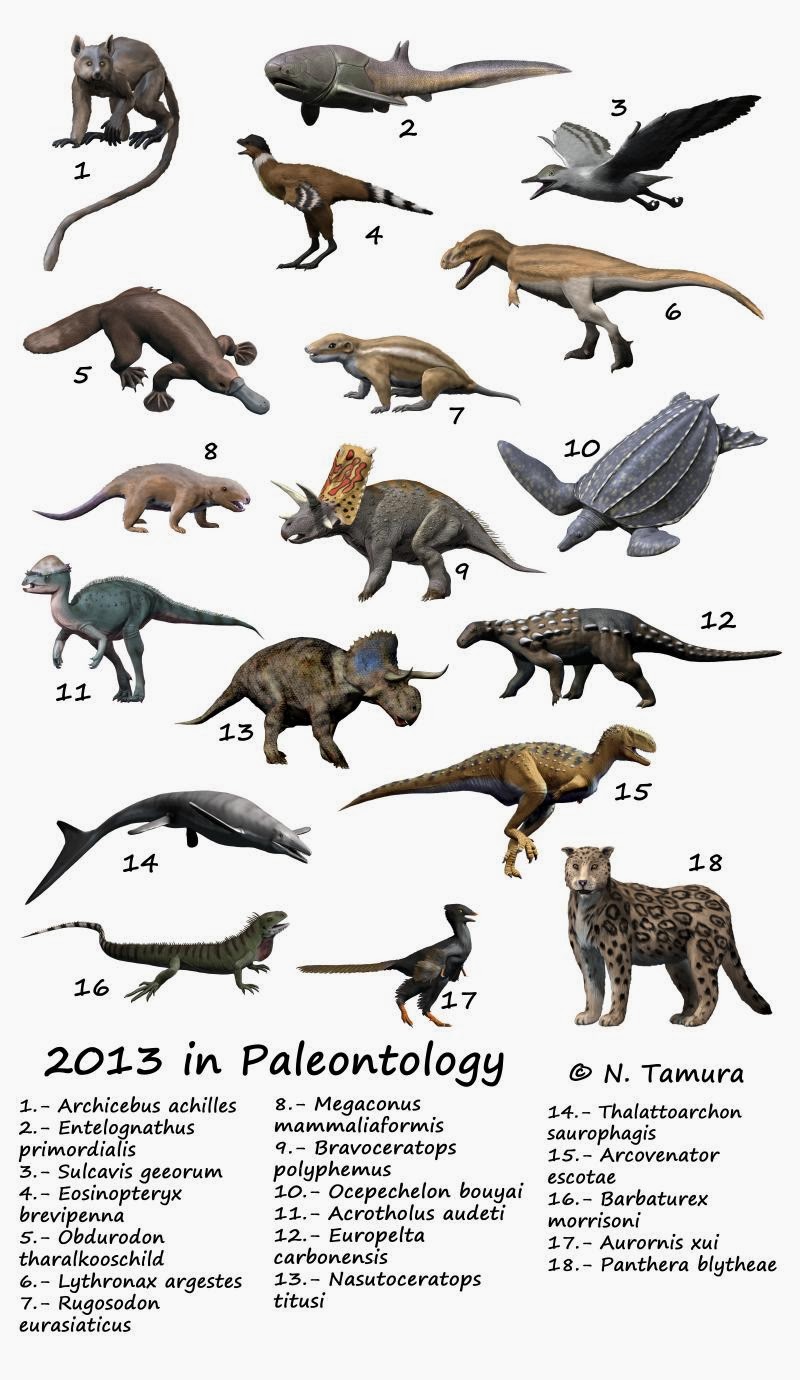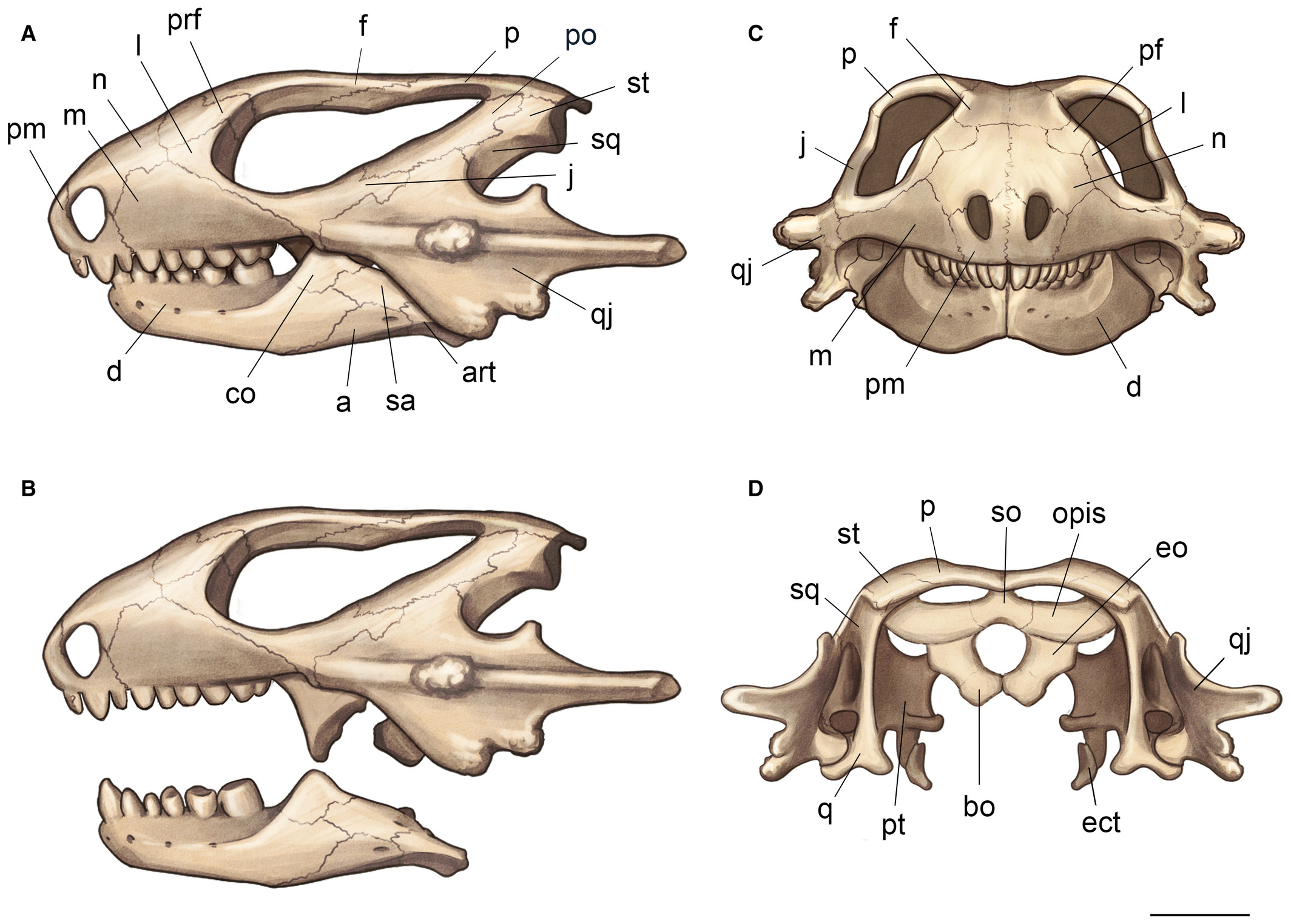|
Ruhuhuaria
''Ruhuhuaria'' is an extinct genus of owenettid procolophonoid reptile known from the Middle Triassic Manda Beds of southwestern Tanzania. ''Ruhuhuaria'' is known solely from the holotype CAMZM T997, poorly preserved but complete skull and mandible recently re-discovered in the collections of the Cambridge Museum of Zoology. It was collected by the English paleontologist Francis Rex Parrington in the early 1930s from the Lifua Member of Manda Beds of the Ruhuhu Basin in Songea Urban District of southwestern Tanzania, which dates back to the late Anisian stage of the Middle Triassic. ''Ruhuhuaria'' was first described and named by Linda Akiko Tsuji, Gabriela Sobral and Johannes Müller in 2013 and the type species is ''Ruhuhuaria reiszi''. The generic name is derived from the name of the Ruhuhu Basin. The specific name, ''reiszi'', honors the Canadian paleontologist Robert R. Reisz. Phylogeny Due to the poor preservation of the holotype, the phylogenetic position of ''Ruhu ... [...More Info...] [...Related Items...] OR: [Wikipedia] [Google] [Baidu] |
Owenettidae
Owenettidae is an extinct family (biology), family of procolophonian parareptiles. Fossils have been found primarily from Africa and Madagascar, with one genus present from South America. It is the sister taxon to the family Procolophonidae. Modesto and Damiani (2007) defined Owenettidae as a stem-based group including ''Owenetta rubidgei'' and all species closely related to it than to ''Procolophon trigoniceps''. Maisch (2025) suggests that ichthyosaurs may have derived from owenettids, as they share numerous characteristics more closely than the previous neodiapsid hypothesis. Distribution The family was constructed in 1939 for the type genus ''Owenetta''. Since then several other genera have been assigned to Owenettidae, including ''Barasaurus'' and ''Saurodektes''. The oldest known owenettid, ''Owenetta rubidgei'', dates back to the Wuchiapingian stage of the Late Permian. It and ''Saurodektes'', have been found from the Beaufort Group in the Karoo, Karoo Basin of South Africa ... [...More Info...] [...Related Items...] OR: [Wikipedia] [Google] [Baidu] |
Owenettid
Owenettidae is an extinct family of procolophonian parareptiles. Fossils have been found primarily from Africa and Madagascar, with one genus present from South America. It is the sister taxon to the family Procolophonidae. Modesto and Damiani (2007) defined Owenettidae as a stem-based group including ''Owenetta rubidgei'' and all species closely related to it than to ''Procolophon trigoniceps''. Maisch (2025) suggests that ichthyosaurs may have derived from owenettids, as they share numerous characteristics more closely than the previous neodiapsid hypothesis. Distribution The family was constructed in 1939 for the type genus '' Owenetta''. Since then several other genera have been assigned to Owenettidae, including '' Barasaurus'' and '' Saurodektes''. The oldest known owenettid, ''Owenetta rubidgei'', dates back to the Wuchiapingian stage of the Late Permian. It and ''Saurodektes'', have been found from the Beaufort Group in the Karoo Basin of South Africa, while '' Barasaurus' ... [...More Info...] [...Related Items...] OR: [Wikipedia] [Google] [Baidu] |
2013 In Paleontology
Plants Cnidarians Arthropods Bryozoans Brachiopods Molluscs Echinoderms Conodonts Fishes Amphibians Research * Laloy ''et al.'' (2013) reinterpret the Eocene frog species ''Rana cadurcorum'' from the Quercy Phosphorites (France) as a junior synonym of '' Thaumastosaurus gezei''. Newly named temnospondyls Newly named lepospondyls Newly named lissamphibians Turtles Research * A study on the anatomy of the brain and inner ear of the Jurassic turtle '' Plesiochelys etalloni'' is published by Paulina Carabajal ''et al.'' (2013). Newly named turtles Thalattosaurs Ichthyopterygians Lepidosauromorphs Newly named sauropterygians Newly named rhynchocephalians Newly named lizards Newly named snakes Archosauromorphs Newly named basal archosauromorphs Archosaurs Other reptiles Synapsids Non-mammalian synapsids Research * The postcranial skeleton of therocephalian ''Ictidosuchoides'' is described by Heidi Fourie (2013). New tax ... [...More Info...] [...Related Items...] OR: [Wikipedia] [Google] [Baidu] |
Manda Beds
The Manda Formation (also known as the Manda Beds) is a Middle Triassic (Anisian?) or possibly Late Triassic (Carnian?) geologic formation in Tanzania. It preserves fossils of many terrestrial vertebrates from the Triassic, including some of the earliest dinosauromorph archosaurs. The formation is often considered to be Anisian in age according to general tetrapod biochronology hypotheses and correlations to the ''Cynognathus'' Assemblage Zone of South Africa. However, some recent studies cast doubt to this age, suggesting that parts deposits may actually be younger (Carnian) in age. History of study One of the first to study rocks of the Manda Formation was British geologist G. M. Stockley. In 1932, Stockley explored the geology of the Ruhuhu Basin in Tanzania. He called a series of layers dating from the Late Carboniferous to the Middle Triassic the Songea Series and divided it into eight units labelled K1-K8. Stockley was also the first to describe fossils from these rocks, ... [...More Info...] [...Related Items...] OR: [Wikipedia] [Google] [Baidu] |
Barasaurus
''Barasaurus'' is an extinct genus of owenettid procolophonoid parareptile known from the Late Permian and Early Triassic of Madagascar. It contains a single species, ''Barasaurus besairiei''. Discovery ''Barasaurus besairiei'', the type species of the ''Barasaurus'', was first described and named by the French paleontologist Jean Piveteau in 1955 on the basis of the holotype MNHN P1, a natural mold of a nearly complete skeleton, missing only the tail and distal limb reposited in the Muséum national d'Histoire naturelle, Paris. The holotype was collected from the Lower Sakamena Formation of the Sakamena Group at the Ranohira locality of Morondava Basin, Fianarantsoa, dating to the Lopingian stage of the late Late Permian period. The generic name honors the Bara people, indigenous to the Ranohira region of Madagascar, and is derived from ''sauros'', meaning "lizard" in Ancient Greek. The specific name, ''besairiei'', honors Henri Michel-Edouard Besairie, a French geologist ... [...More Info...] [...Related Items...] OR: [Wikipedia] [Google] [Baidu] |
Procolophonoid
Procolophonoidea is an extinct superfamily of procolophonian parareptiles. Members were characteristically small, stocky, and lizard-like in appearance. Fossils have been found worldwide from many continents including Antarctica. The first members appeared during the Late Permian in the Karoo Basin of South Africa. Taxonomy Procolophonoidea includes the families Owenettidae and Procolophonidae. '' Sclerosaurus'', which is placed within its own family Sclerosauridae, may be a member of the superfamily as well. In 1997, De Braga and Rieppel defined this same taxon (the oldest common ancestor of Procolophonidae and Owenettidae and all its descendants) using the name Procolophoniformes.Jalil, N. E., & Janvier, P. (2005). Les pareiasaures (Amniota, Parareptilia) du Permien supérieur du Bassin d’Argana, Maroc. Geodiversitas, 27(1), 35-132. When the superfamily was constructed in 1956, it was thought to be within the anthracosaur suborder Diadectomorpha. Since then it has been place ... [...More Info...] [...Related Items...] OR: [Wikipedia] [Google] [Baidu] |
Owenetta Rubidgei
''Owenetta'' is an extinct genus of owenettid procolophonian parareptile. Fossils have been found from the Beaufort Group in the Karoo, Karoo Basin of South Africa. Although most procolophonians lived during the Triassic, ''Owenetta'' existed during the Wuchiapingian and Changhsingian stages of the Permian, Late Permian as well as the early Induan stage of the Early Triassic. It is the type genus of the family (biology), family Owenettidae, and can be distinguished from other related taxa in that the posterior portion of the supratemporal bears a lateral notch and that the pineal foramen is surrounded by a depressed Parietal bone, parietal surface on the skull table. Species The type species of ''Owenetta'' is ''O. rubidgei''. It is known from several skulls, but no postcranial skeleton. It was described in 1939 from a partial skull found from the Late Permian Cistecephalus Assemblage Zone of the Beaufort Group. Several other localities, all from the overlying Dicynodon Assemblag ... [...More Info...] [...Related Items...] OR: [Wikipedia] [Google] [Baidu] |
Saurodektes
''Saurodektes'' is an extinct genus of owenettid procolophonoid parareptile known from the earliest Triassic deposits of Eastern Cape Province, South Africa. It was first named by Sean P. Modesto, Ross J. Damiani, Johann Neveling and Adam M. Yates in 2003 and the type species is ''Saurodectes rogersorum''. The generic name ''Saurodectes'' was preoccupied by the generic name of '' Saurodectes vrsanskyi'' Rasnitsyn & Zherikhin, 2000, a fossil chewing lice known from the Early Cretaceous of Russia. Thus, an alternative generic name, ''Saurodektes'', was proposed by Modesto ''et al.'' in 2004. The generic name means "lizard", ''sauros'', and "biter", ''dektes'' from Greek. The specific name, ''rogersorum'', honors Richard and Jenny Rogers, owners of the farm Barendskraal, for their hospitality, support and interest in the work of the paleontologists who recovered the holotype. ''Saurodektes'' is known solely from the holotype BP/1/6025, a partial skull and some fragmentary partial po ... [...More Info...] [...Related Items...] OR: [Wikipedia] [Google] [Baidu] |
Name Of A Biological Genus
Genus (; : genera ) is a taxonomic rank above species and below family as used in the biological classification of living and fossil organisms as well as viruses. In binomial nomenclature, the genus name forms the first part of the binomial species name for each species within the genus. :E.g. ''Panthera leo'' (lion) and ''Panthera onca'' (jaguar) are two species within the genus ''Panthera''. ''Panthera'' is a genus within the family Felidae. The composition of a genus is determined by taxonomists. The standards for genus classification are not strictly codified, so different authorities often produce different classifications for genera. There are some general practices used, however, including the idea that a newly defined genus should fulfill these three criteria to be descriptively useful: # monophyly – all descendants of an ancestral taxon are grouped together (i.e. phylogenetic analysis should clearly demonstrate both monophyly and validity as a separate lineage). # re ... [...More Info...] [...Related Items...] OR: [Wikipedia] [Google] [Baidu] |
Cladogram
A cladogram (from Greek language, Greek ''clados'' "branch" and ''gramma'' "character") is a diagram used in cladistics to show relations among organisms. A cladogram is not, however, an Phylogenetic tree, evolutionary tree because it does not show how ancestors are related to descendants, nor does it show how much they have changed, so many differing evolutionary trees can be consistent with the same cladogram. A cladogram uses lines that branch off in different directions ending at a clade, a group of organisms with a last common ancestor. There are many shapes of cladograms but they all have lines that branch off from other lines. The lines can be traced back to where they branch off. These branching off points represent a hypothetical ancestor (not an actual entity) which can be inferred to exhibit the traits shared among the terminal taxa above it. This hypothetical ancestor might then provide clues about the order of evolution of various features, adaptation, and other e ... [...More Info...] [...Related Items...] OR: [Wikipedia] [Google] [Baidu] |
Procolophonid
Procolophonidae is an extinct family of small, lizard-like parareptiles known from the Late Permian to Late Triassic that were distributed across Pangaea, having been reported from Europe, North America, China, South Africa, South America, Antarctica and Australia. The most primitive procolophonids were likely insectivorous or omnivorous, more derived members of the clade developed bicusped molars, and were likely herbivorous feeding on high fiber vegetation or durophagous omnivores. Many members of the group are noted for spines projecting from the quadratojugal bone of the skull, which likely served a defensive purpose as well as possibly also for display. At least some taxa were likely fossorial burrowers. While diverse during the Early and Middle Triassic, they had very low diversity during the Late Triassic, and were extinct by the beginning of the Jurassic. Phylogeny The family is defined as all taxa more closely related to ''Procolophon trigoniceps'' than to ''Owenetta ru ... [...More Info...] [...Related Items...] OR: [Wikipedia] [Google] [Baidu] |



